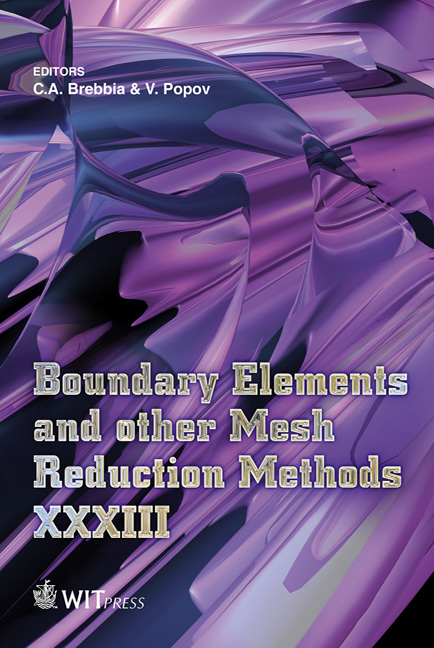A Meshless Solution Of Two Dimensional Density-driven Groundwater Flow
Price
Free (open access)
Transaction
Volume
52
Pages
12
Page Range
253 - 264
Published
2011
Size
579 kb
Paper DOI
10.2495/BE110221
Copyright
WIT Press
Author(s)
K. Kovarik
Abstract
The boundary element method (BEM) is a very useful method used for numerical models of groundwater flow. However, this method was aimed to solve problems in homogeneous domains and it presents even greater difficulties than the other numerical methods when coping with the nonhomogeneities which are so characteristic in the groundwater hydraulics. The meshless LBIE method is a very promising meshless scheme. This method is characterized as meshless since distributed nodal points, covering the domain, are employed. Nodal points can be randomly spread over the domain. Every node is surrounded by a simple surface (circle) centered at the collocation point and the boundary integral equation is written on this local boundary. The unknown variables, in the local sub-domains, are approximated by some of the interpolationmethods to obtain a system of linear equations. Solving this system of equations leads to the numerical solution for the main problem. Several authors used the moving least squares (MLS) method as an interpolation method but nowadays the radial basis functions (RBF) interpolation is used instead. In this paper the combination of RBF and the dual reciprocity method is used to solve the time-dependent groundwater flow in heterogeneous domain combined with temperature transport which also influences the density and viscosity of groundwater. Keywords: heat transfer, density driven flow, dual reciprocity, radial basis functions. 1 Introduction The density driven groundwater flow occurs mainly in some environmental problems such as saltwater intrusion or leakage from landfills. We must solve this problem also when we study the geothermal problems. Although density driven
Keywords
heat transfer, density driven flow, dual reciprocity, radial basisfunctions





